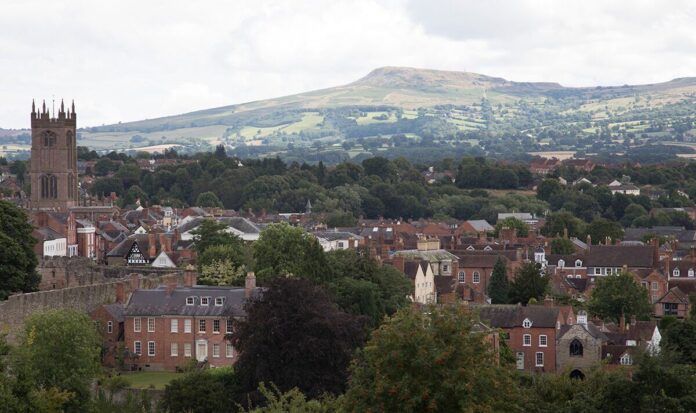Ludlow as seen from above (Image: GETTY) Ludlow’s recorded history begins in 1086, just 20 years after the Norman conquest of Britain . It was in that year that the town’s impressive castle was first built, the local Norman aristocratic De Lacy family deciding to develop a new settlement along the Welsh Marches. A planned town, Ludlow built up and up over the following centuries, seeing cascades of history layer over its streets and buildings. Those hundreds of years have left it as one of England’s most beautiful and well-preserved settlements, its locals and those that work there are deeply proud of the place they called home. One local, Mark, who has lived in the town for 40 years, summed up why he believed Ludlow had remained the same for so long, telling Express.co.uk: “You’d have to have an act of God to change any of the way the buildings look.” Broad Gate, one of the old defences which helped protect the town (Image: Google Maps) Look at any photograph of Ludlow and those very buildings will rouse your attention: they are old, very old, some hundreds of years old. The historic centre is dominated by independent shops, many of which have been in the hands of the same families since the 19th century. “These independent businesses are what Ludlow is about,” said Stephen from Harp Lane Deli, which sits just across from the town square’s historic market. History is piled on top of history in Ludlow. Neolithic trackways lead to Norman roads which snake towards medieval cobblestone that spill onto 21st-century tarmac. “It truly lives up to its historic appeal,” said Mark, who owns an antique shop. “You can feel the history everywhere.” From 1233, town walls were constructed all around Ludlow, protecting the settlement from the outside. Four main gates, and three secondary gates, were built to bolster defences. The castle is the most obvious relic of this need for ramparts, the Norman-era structure sitting high above the town itself but within spitting distance so that Ludlow at once feels spread out but closed in. A view Of Ludlow Castle as painted by Francis Towne in 1777 (Image: GETTY) Many sections of the original wall remain, mostly along Silk Mill Lane towards Mill Street and the site of the town gate. This ringing in by a full circuit wall makes Ludlow unique, the design present in only just over 100 towns in England and Wales. Manned points of entry not only enabled defence from invaders and undesirables but offered a way to collect tolls, making Ludlow rich. Economic growth continued up until the late 19th century when things began to slow down, and population growth stagnated. Soon, the size of the town ceased to spread out. Goods that Ludlow was renowned in, things like cotton and wool, declined in importance, and larger, newer towns began sprouting up all across the west. Ludlow’s high street is immaculately preserved, many shop fronts just as they were in the 1800s (Image: GETTY) A sad period, many say the lack of growth is a blessing in disguise, having saved Ludlow’s historical splendours while other towns of similar age and size went on to rid themselves of their pasts in order to grow. Today, there are almost 500 listed buildings, protected by the law. Ludlow’s medieval street layout survives almost untouched and unchanged. Some 11,000 people live in Ludlow. People like Melissa, who works at Bodenhams of Ludlow, an independent lifestyle shop run by the same family since 1860. She has lived in Ludlow all her life, and while she admitted to taking the town’s history and significance in Britain for granted, said she was “proud” of her hometown.
The beautiful little English town that’s barely changed in hundreds of years
Sourceexpress.co.uk
RELATED ARTICLES


